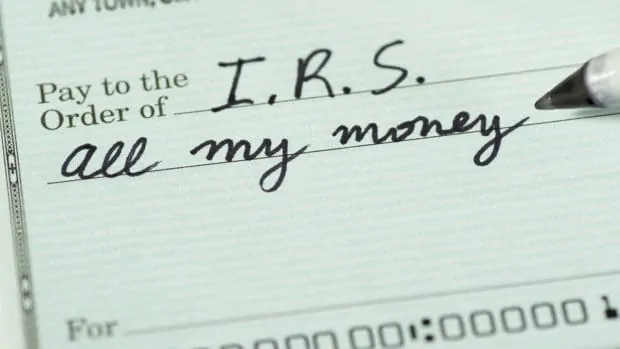When you have tax debt, it’s possible that the IRS will garnish part of your wages in what is known as “continuous levy.” If you don’t respond to their request for repayment, the IRS will inform your employer and a large part of your paycheck will automatically go toward your tax debt balance. They can take a quarter or more of your monthly income, which can mean heavy financial strain. Fortunately, there are many options for how to stop IRS wage garnishment. Decide which option is best for you so you can stop IRS wage garnishment and minimize the financial burden.
Method 1: Pay off the debt in one lump sum
Pay off the debt up front.
If you have the means, pay off your tax debt as soon as you find out about the wage garnishment. You have to fail to reply to the IRS for the wage garnishment to start, but it’s possible you missed these communications. You can pay over the phone, by mail, via money order, or online with your debit or credit card or straight out of your bank account. This is the fastest method for stopping wage garnishment if you have the means to make it happen. If you need an extra boost to pay off the IRS, you may consider selling or liquidating an asset.
TIP:
If you have never promised to pay your debt in full before, the IRS may fully release your wage garnishment with a mere promise to fully pay your tax bill within 60 days.
Estimated Time: 1+ hours
Method 2: Set up a repayment plan
Apply for a payment plan for paying off your tax debt.
An installment agreement between you and the IRS means that you can pay off all of your debt in small installments. You make monthly payments that fit your budget based on a financial statement or a fixed monthly amount for up to six years. Review the plans and start the process online or over the phone. The IRS will charge a user fee to your overall balance when you set up an installment agreement.
TIP:
If you are a low-income taxpayer, you may be eligible for a fee waiver that covers the user fee for your plan.
Perform Time: 15 minutes – 6 hours
Response Time: 1-3 months
Payment Time: Varies by plan
Method 3: Settle your tax debt for less than you owe
Negotiate a payment plan that allows you to pay less than you actually owe.
Visit the IRS website and complete the OIC pre-qualifier to see if you may be eligible to settle your debt for less than what you owe. If you qualify, it will reduce the overall amount of tax debt you have to pay back with a legal settlement. Before the IRS will consider permitting you to use an OIC, you must file all your tax returns. If you are granted an OIC, you must also stay completely up to date on your taxed for five years following.
TIP:
If your OIC request is rejected, you can appeal the rejection within 30 days of receiving your assessment from the IRS.
Perform Time: 3-6 hours
Response Time: 4-6 weeks
Assessment Time: 4-24 months
Appeal Processing Time: 1-6 months
Payment Time: 2 years or less
Need help setting up an offer in compromise? Debt.com can connect you to a tax debt professional.
Method 4: Declare hardship
Contact the IRS and explain that the wage garnishment is causing you financial hardship.
If the IRS hears your story and determines that you really need the income they would take, they may stop the levy on your wages. However, this doesn’t mean that you never have to pay off your tax debt. Declaring hardship will just buy you more time because you qualify for Currently Not Collectible status. The IRS will only start collection actions again once your financial situation improves.
TIP:
Do your research about your financial situation before you call the IRS to make the process go faster.
Perform Time: 2-8 hours
Method 5: Declare bankruptcy
File for bankruptcy to get tax debt discharged.
You can stop IRS wage garnishment if you declare bankruptcy. When you file for bankruptcy, you get an automatic stay that stops all collection actions, including garnishment, repossession, and foreclosure. This can result in a big hit to your credit score, so don’t take this option lightly. But bankruptcy can be a good way to get a clean break from debt, including back taxes.
TIP:
Read up on bankruptcy taxes to prepare for the aftermath of filing.
Time: 6-60 months, depending on your filing
Method 6: Get professional help
Contact a tax debt professional to help you stop IRS wage garnishment.
Having your wages levied is a complicated and stressful experience. Ensure you are making the right decisions and understand all of the options available to you by hiring a professional who knows exactly how to stop IRS wage garnishment. A good tax professional will be able to leverage your financial information in a way that protects you and results in a solution to the IRS Collections problem you are facing. You can get a free consultation from a certified tax resolution specialist to identify the right solution for your needs. Beware of tax professionals who are not experienced in IRS collections.
TIP:
Debt.com can help you find the right tax debt professional for your needs.
Estimated Time: 30 minutes – 1 hour
Method 7 (the crazy, not-at-all-advisable method): Quit your job
Resign or switch jobs.
This isn’t the wisest option. In fact, most experts would say you’re crazy for trying this. But, because it takes a while for the IRS to file for wage garnishment with a new employer, quitting is a way to avoid paying your tax debt right away. Just keep in mind, the IRS will eventually find you and when they do, they will likely have less empathy. At a minimum, you’ll face higher penalties, which will only increase how much you owe.
TIP:
Create a game plan before you even think about putting in your two-week notice.
Time: 2+ weeks







